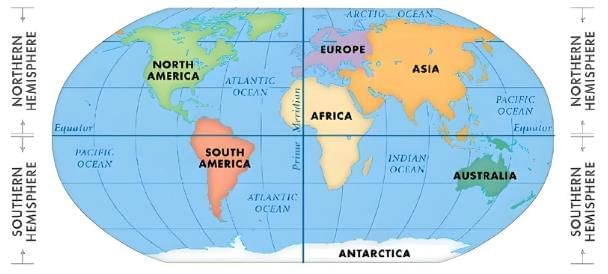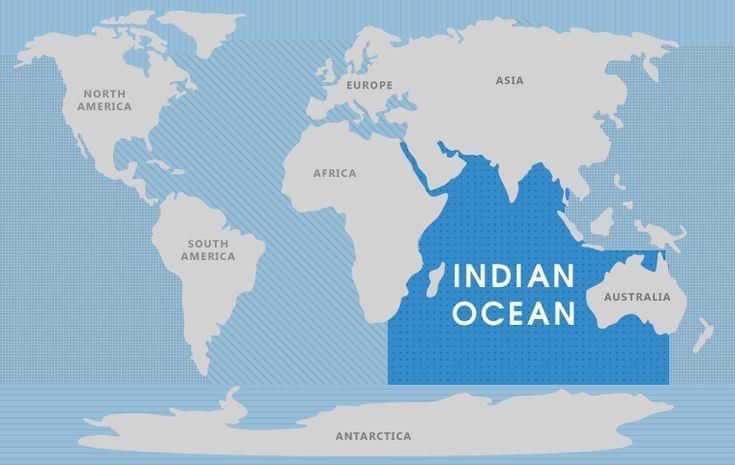Case Based Questions: Oceans and Continents | Social Studies for Class 6 PDF Download
Q1: Read the source and answer the question that follows
Aryan and Meera are studying the Earth in their geography class. Aryan points to a world map and says, “Look, most of the Earth is covered by oceans, which is why it’s called the ‘blue planet.’” Meera asks, “But which part of Earth has more land?” Aryan explains that the Northern Hemisphere has more land than the Southern Hemisphere, where water dominates. Riya wonders, “How do oceans impact our life?” Aryan adds, “Oceans are important for rainfall, oxygen production, and regulating the climate.

Q1. Why is Earth called the 'blue planet'?
Ans: Earth is called the "blue planet" because oceans cover most of it, making it look blue when seen from space.
Q2. Why is it important that oceans produce oxygen?
Ans: Oceans create more than half of the world's oxygen, which is needed for humans and animals to survive.
Q3. Which hemisphere has more land than water?
A) Southern Hemisphere
B) Northern Hemisphere
C) Both hemispheres have equal land
D) None of the above
Ans: B) Northern Hemisphere
Q2: Read the source and answer the question that follows
Alok, Ayesha, and Ravi are talking about water during their science class.
Ayesha wonders, “Why is seawater salty?”
Ravi explains, “Seawater is salty because rivers wash salt from the land into the oceans. Over time, this salt builds up in the ocean.” Alok asks, “How is freshwater different?”
Ayesha answers, “Freshwater has very little salt, which is why it’s used for drinking, farming, and most other purposes.
Q1. Why is seawater salty and freshwater not?
Ans: Seawater is salty because rivers carry salt into the oceans. Freshwater has little salt, so it’s safe to drink and use.
Q2. Why is freshwater important for humans and animals?
Ans: Freshwater is needed for drinking, farming, and other daily activities because it has very little salt compared to seawater.
Q3. What makes seawater salty?
A) Minerals from rocks
B) Salt washed from land by rivers
C) Chemical reactions in the water
D) Pollution
Ans: B) Salt washed from land by rivers
Q3: Read the source and answer the question that follows
Ananya, Rajeev, and Priya are learning about the Indian Ocean in class.
Rajeev asks, “Where is the Indian Ocean located?”
Ananya explains, “The Indian Ocean is surrounded by Asia to the north, Africa to the west, and Australia to the east. To the south, it connects with the Southern Ocean.”
Priya asks, “What are the important parts of the Indian Ocean near India?”
Ananya replies, “To the west of India, there is the Arabian Sea, and to the east, there is the Bay of Bengal.

Q1. Where is the Indian Ocean located?
Ans: The Indian Ocean is between Asia (north), Africa (west), Australia (east), and the Southern Ocean (south).
Q2. Why are the Arabian Sea and Bay of Bengal important to India?
Ans: The Arabian Sea and Bay of Bengal are important for trade, transport, and fishing, helping India’s economy.
Q3. Which of the following is to the east of India?
A) Arabian Sea
B) Bay of Bengal
C) Pacific Ocean
D) Southern Ocean
Ans: B) Bay of Bengal
|
66 videos|344 docs|28 tests
|
FAQs on Case Based Questions: Oceans and Continents - Social Studies for Class 6
| 1. What are the major oceans and their characteristics ? |  |
| 2. How do continents differ from oceans ? |  |
| 3. What are the names of the continents and their locations ? |  |
| 4. How do ocean currents affect climate ? |  |
| 5. What is the significance of oceans and continents in human life ? |  |
















